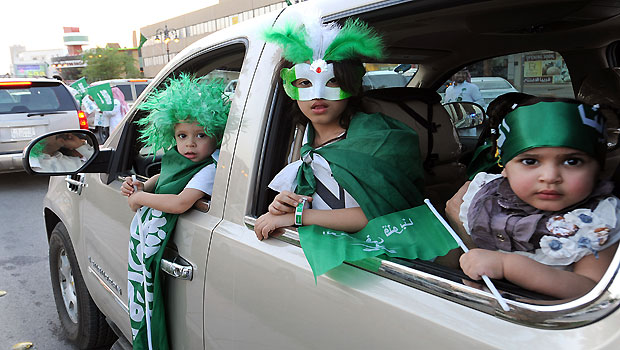A long time has passed since the young Abdulaziz Bin Abdul Rahman Al Faisal Al Saud led his brave battalion to retake Riyadh, to make it the capital of the Saudi state. This was in 1902, and the people of Riyadh awoke to the news of Abdulaziz’s entry. During that time, especially until the death of the founding King in 1953, a new history was born in the Arabian Peninsula.
For half a century, King Abdulaziz fought a series of struggles, which have become heroic chapters in a story of unity and unification. He created this in the Arab world—or, rather, the Islamic world—or indeed the world as a whole, a giant named the Kingdom of Saudi Arabia.
Following military, security, economic and social battles for construction and unity, the official name of the country was announced on September 23, 1932: the Kingdom of Saudi Arabia.
The story of oil came to the fore during the era of the founder, following explorations in the Eastern Province by large US oil companies. In the late 1930s, we saw the large-scale flow of oil and the production of black gold. It opened another chapter in the country’s history: the story of an oil giant and international economic powerhouse that has secured a place today in the world’s top twenty economies.
More than this, Saudi Arabia is not just an oil producer, it is the home of the Two Holy Mosques. Its custodianship of these two holy sites has granted the Kingdom an influential position in the Islamic world, ultimately granting it a moral force whose strength is unequaled.
Saudi Arabia united following division, its people have come together following dispersal, while those who were afraid have been comforted thanks to Almighty God.
Today, in September 2013, more than one century has passed since the beginning of the story which was initiated when the battalion of Abdulaziz retook Riyadh in 1902.
After the passing of King Abdulaziz, the banner was held by his sons: King Saud, King Faisal, King Khalid and King Fahd. Today, it is still held by his son, Custodian of the Two Holy Mosques King Abdullah Bin Abdulaziz.
The challenges of today differ from the challenges of yesterday, and each era has its own special circumstances and idiosyncrasies, whether good or bad. Today, there is the great security challenge, in light of a tense regional climate and unprecedented turmoil.
North of Saudi Arabia lies the divided Iraq and the inflamed Syria, while Yemen lies to the South, and it is still convalescing after years of storms. As for the Gulf in the East, there is Iran, with its nuclear program and its expansionist regional political project. West, across the Red Sea, there is Egypt, Umm Al-Dunya (the mother of the world), which is continuing to struggle to reach safety. And that is not to mention Palestine.
There are a number of files that constitute political challenges, while there are also security challenges for the Saudi leadership. These are not just the distant problems of neighbors—they effect the domestic situation, and therein lies the real challenge.
More than this, there are also developmental, economic and administrative challenges in terms of dealing with Saudi society. Saudi Arabia has a predominately young population, who have their hopes and dreams, some of which may be excessive, as is the custom of the youth. There is another problem in terms of re-engineering the Saudi economy towards greater dependence on the private sector, liberalizing trade while ensuring that the state remains an authority in terms of arbitration and control. All of this requires the re-engineering of Saudi society and directing its energy towards production and employment.
During the era of King Abdullah Bin Abdulaziz, Saudi Arabia has renewed itself. The King has launched strategic projects in terms of reform and renewal. One of the most prominent of these projects is the huge educational scholarship program, which is part of long-term investment in Saudi human resources. That is not to mention the large expenditure on transport and infrastructure projects, as well as the establishment of dozens of state universities, in parallel with private universities.
Is this all? To be sure, the march continues, and there are many files, but the Saudi ship continues to sail with determination despite all the domestic and foreign difficulties it is facing, thanks to the skilled leadership of King Abdullah Bin Abdulaziz.
